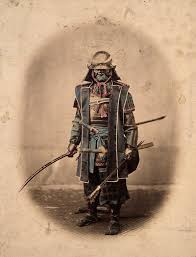The Golden Age
Feudal Japan was a time when the country was ruled by powerful warlords called daimyos, and their loyal warriors were known as samurai and like knights with kings, samurai followed daimyos. The samurai followed a strict code called Bushido, which focused on honor, loyalty, and bravery. They were not only skilled fighters but also respected members of society.
For centuries, the samurai were at the top of the social ladder. The samurai class began in the 1100s and lasted for hundreds of years. They protected their lords, fought in wars, and even had the right to kill commoners who disrespected them. Being a samurai granted you a fair amount of power and respect. They were respected members of society who served their lords and protected their land.
The End of an Era
But everything started to change in the 1800s, during a time called the Meiji Restoration. Japan decided to modernize fast in order to compete with powerful Western countries. The government got rid of the old feudal system and replaced it with a central government, modern schools, new industries, and a national army. This meant the samurai lost their special status, land, and even the right to carry swords.
Unfortunately, not all samurai accepted this change quietly or with open arms, some decided to fight change and rebelled. One of the most famous events was the Satsuma Rebellion in 1877, led by Saigō Takamori, a respected former samurai. He and thousands of samurai rose up against the government, hoping to bring back the old ways. But the government’s modern army was too strong. The rebellion was crushed, and Saigō Takamori died, symbolizing the end of the samurai era.
Conclusion
In the end, the samurai way of life couldn’t survive in a modern world, they simply could not fight change. Yet their legacy still lives on in Japanese culture, history, and even in movies and anime today, although they are often romanticized in a lot of depictions.












